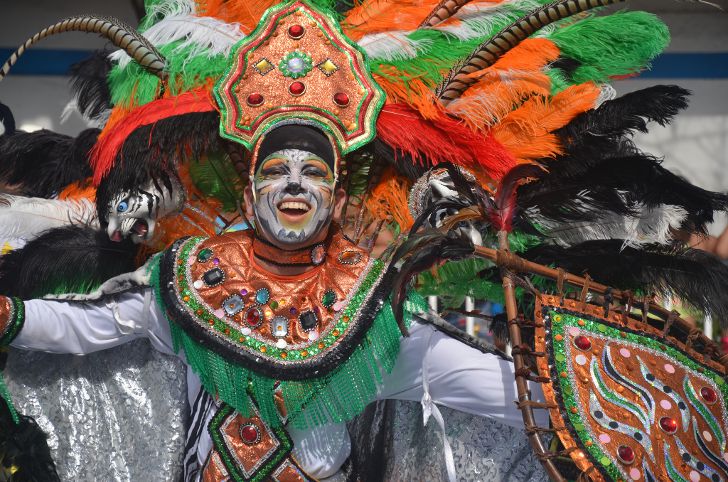The origin of the Barranquilla Carnival is unclear. It probably originated as a holiday for slaves and grew to be a celebration for everyone. The first recorded mention of Barranquilla’s Carnival dates back to 1888 when a figure known as King Momo emerged as one of the main characters. Today’s Colombian Carnival is a mixture of European, African and Indian traditions and customs.
Pre-Carnival activities in Barranquilla typically start as early as January. They include the reading of the Carnival proclamation, the crowning of the Queen, and Children’s Carnival. The official opening of the Carnival is held on the Saturday before Ash Wednesday (the first day of Lent). The festivities began with the most important event of the Carnival called the Battle of the Flowers (la Batalla de Flores). It is a six-hour long parade led by the Carnival Queen. It features colorful floats, dance groups, costumed characters, musicians, fire breathers, and other performers.
Carnival Sunday is the day of the Grand Parade. This parade doesn’t feature floats and focuses on masked and costumed characters instead. The highlight of the day is a competition of dance groups. The winners get to perform in the Battle of Flowers the next year. Monday is the day of the Fantasy Parade and the Orchestra Festival. The Festival involves a variety of Latin and Caribbean bands that compete for the coveted prize, Golden Congo.
Shrove Tuesday is the final day of the Carnival. The day’s main event is the burial of Joselito Carnival, a character representing the joy of the festivities. The final parade of the Barranquilla Carnival is basically a mock funeral procession featuring revelers who mourn Joselito Carnival’s death. However no one is too sad because they know that Joselito will resurrect the following year in time for the next Carnival.
The Barranquilla Carnival is famous for its traditional music and costumes that illustrate its multiculturalism. The festivities feature many styles of Colombian music including cumbia, porro, champeta, fandango, mapalé, gaita, puya, merecumbé, and many more. Dances performed at the Carnival include the Spanish paloteo, African congo, and indigenous mico y micas.

Photo: Gerardo Pino




